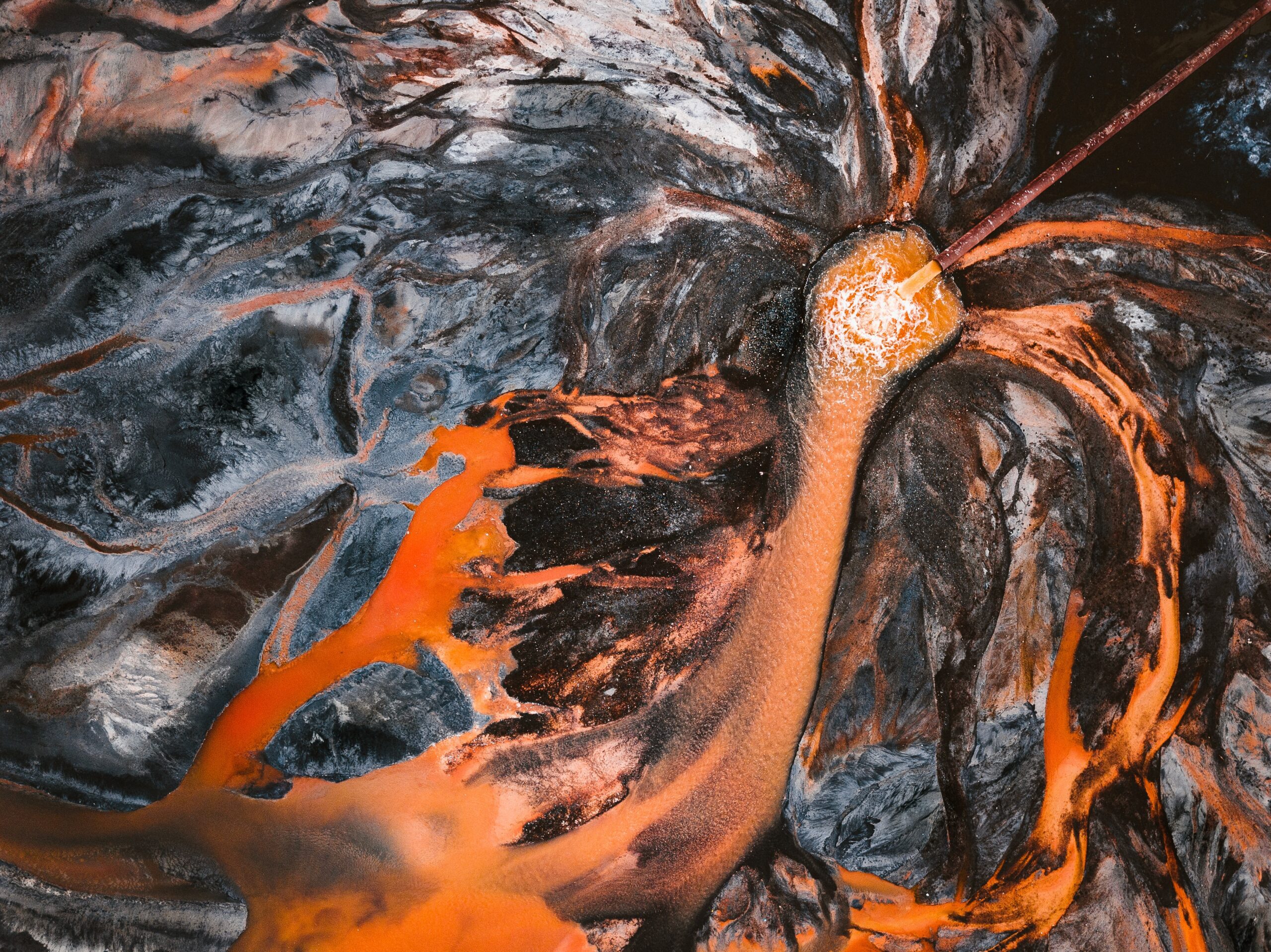You may have never thought about it before, but the safety of your well against surface water contamination is of utmost importance. Our article will provide you with valuable insights and practical tips on how to protect your well from potential contaminants. From understanding the dangers of surface water to implementing preventive measures, we will guide you through the process, ensuring the continued safety and purity of your well water. So, let’s dive into the world of safeguarding your well!
Regular Testing of Water Quality
Regular testing of your well water is crucial to ensure its safety and quality. This involves testing for bacteria, chemical contaminants, and other potential impurities that can pose a risk to your health. Bacteria testing is essential as it helps identify the presence of harmful microorganisms such as E. coli and coliform bacteria, which can indicate fecal contamination. Chemical contaminants, on the other hand, can come from various sources such as agricultural runoff, industrial activities, or even natural geological processes. Testing for these contaminants, including heavy metals, pesticides, and volatile organic compounds, is important to detect any potential threats to your well water quality. Additionally, considering other potential contaminants specific to your area, such as radon or arsenic, is crucial for a comprehensive understanding of your well water’s safety.
Test for Bacteria
Bacteria testing is a fundamental aspect of water quality testing, as the presence of harmful microorganisms can lead to serious health risks. Hiring a water testing laboratory or a certified professional can help you conduct accurate and reliable tests. These tests typically involve analyzing water samples for the presence of coliform and E. coli bacteria. Coliform bacteria are a common group of bacteria found in the environment, including in feces, while E. coli specifically indicates the presence of fecal contamination. Regular testing for bacteria is particularly important if you have experienced gastrointestinal illnesses in your household or if there have been incidents of flooding near your well.
Test for Chemical Contaminants
Chemical contaminants can be introduced into your well water from various sources, including industrial activities, agricultural runoff, and improper disposal of hazardous materials. Testing for chemical contaminants is essential to ensure your well water is free from potentially harmful substances. Common chemical contaminants that may be of concern include heavy metals (such as lead, mercury, and arsenic), pesticides, fertilizers, and volatile organic compounds (VOCs). Hire a water testing laboratory or a qualified professional who can help you identify the specific tests needed based on your location, potential sources of contamination, and any specific concerns you may have.
Test for Other Potential Contaminants
In addition to testing for bacteria and chemical contaminants, it is important to consider other potential contaminants that may be specific to your area. For example, some regions may have naturally occurring contaminants such as radon, which can seep into groundwater and affect the quality of your well water. Arsenic is another naturally occurring contaminant that may be present in wells located in certain geological formations. Testing for these specific contaminants can provide valuable insights into the safety and quality of your well water. Consult with a water testing professional to determine if additional testing is necessary based on your geographical location and any known risks in your area.
Proper Well Construction and Maintenance
Ensuring that your well is properly constructed and maintained is key to safeguarding your well water against contamination. By following a few important guidelines, you can minimize the risk of pollutants entering your well water.
Hire a Qualified Well Contractor
When it comes to constructing or repairing your well, it is crucial to hire a qualified well contractor who understands the proper techniques and regulations. A qualified well contractor will have the knowledge and expertise to design and install a well system that meets legal requirements and protects your water supply from potential contaminants. They will also help ensure that the well is properly located to minimize the risk of surface water runoff entering the well.
Ensure Proper Well Casing and Sealing
Well casing and sealing are critical to prevent surface water contamination. The well casing, typically made of steel or plastic, serves as a protective barrier between the well and the surrounding soil and water. It helps prevent the infiltration of contaminants into the well. It is important to use a casing that meets industry standards and is appropriate for your specific well. Additionally, proper sealing techniques, such as sealing the annular space between the well casing and the borehole, help prevent the migration of contaminants along the well shaft.
Regularly Inspect and Maintain the Well
Regular inspections and maintenance of your well are essential for its longevity and continued safety. Periodically inspect the wellhead, including the cap and any above-ground components, to ensure there are no visible signs of damage or deterioration. Take note of any cracks, rust, or loose fittings that may indicate potential vulnerabilities. It is also important to inspect the well pump and associated equipment regularly to ensure they are functioning properly and not leaking any fluids. Routine maintenance, such as cleaning the wellhead, checking the pump and electrical connections, and lubricating moving parts, can help prevent malfunctions and identify any potential issues before they become major problems.

Installing a Secure Well Cap
Installing a secure well cap is another important measure to protect your well from contamination. A properly fitting and durable well cap acts as a barrier, preventing the entry of contaminants, insects, and small animals into the well. Taking the necessary steps to ensure proper venting and screening is crucial to maintain the quality and safety of your well water.
Choose a Durable and Properly Fitting Cap
When selecting a well cap, choose one that is made of durable material and designed to fit your specific well casing. Different well casings may require different types of caps, so consult with a well contractor or a knowledgeable professional to ensure you select the appropriate cap for your well. A durable cap will withstand environmental conditions and prevent the entry of contaminants, while a proper fit ensures a tight seal and reduces the risk of pollutants entering the well.
Ensure Proper Venting and Screening
Proper venting and screening play important roles in maintaining the integrity of your well cap. Venting allows for the release of air pressure and helps to prevent the buildup of gases within the well. Screening, on the other hand, prevents insects, small animals, and debris from entering the well through the cap. Regularly inspect and clean the vent and screen to ensure they remain unobstructed. This will help safeguard your well from potential contaminants and ensure the longevity of your well cap.
Regularly Inspect and Maintain the Well Cap
To ensure the continued effectiveness of your well cap, it is important to regularly inspect and maintain it. Inspect the cap for any signs of damage, such as cracks, holes, or deterioration, that may compromise its integrity. Additionally, check the tightness of the cap to ensure a proper seal. If any issues are identified, contact a professional well contractor to address and resolve them promptly. Preventive maintenance, such as cleaning the cap and removing any debris around the wellhead, can also help extend the lifespan of your well cap and protect your water supply.
Maintaining a Safe Distance from Contaminating Sources
Keeping a safe distance between potential contaminating sources and your well is essential to safeguard your water supply. By implementing a few preventative measures, you can minimize the risk of contamination from livestock, septic systems, and hazardous materials.
Keep Livestock and Septic Systems at a Safe Distance
Livestock and septic systems can pose a risk of contamination if they are located too close to your well. Ensure that livestock operations, including barns, feedlots, and manure storage facilities, are situated at a safe distance away from the well. The specific distance required will vary depending on local regulations and circumstances, so consulting with local authorities or a well contractor can help you determine the appropriate setback. Similarly, septic systems should be located at a sufficient distance from the well, following local regulations and guidelines. Be mindful of any potential septic system failures or leaks, as they can introduce harmful pathogens and chemical contaminants to the groundwater.
Avoid Storing Hazardous Materials Near the Well
Storing hazardous materials near the well can significantly increase the risk of contamination if spills or leaks occur. It is important to store hazardous substances, such as gasoline, oil, pesticides, and cleaning chemicals, in secure and separate storage areas, away from the well. Ensure that these storage areas are properly labeled, well-maintained, and equipped with appropriate containment measures to prevent leaks or spills from reaching the groundwater. Regularly inspect the storage containers for any signs of damage or deterioration and address any issues promptly to minimize the risk of contamination.
Properly Manage Fertilizers and Pesticides
Improper use or overuse of fertilizers and pesticides can also contribute to well water contamination. When applying these substances, take precautions to prevent their migration into the groundwater. Follow the manufacturer’s instructions for proper application rates and timing, and avoid applying them near the well or areas prone to runoff. Consider alternative methods, such as organic fertilizers or natural pest control techniques, whenever possible. Additionally, ensure that any unused pesticides or fertilizers are stored properly and disposed of according to local regulations. By managing these substances responsibly, you can minimize the risk of contamination and protect your well water quality.

Managing Surface Water Runoff
Surface water runoff can pose a significant risk to the quality of your well water. By implementing proper drainage and erosion control measures, you can minimize the potential for contaminants to enter your well.
Divert Surface Water Away from the Well
To protect your well from surface water runoff, it is important to divert the flow away from the immediate vicinity of the well. Ensure that the land around your well slopes away from the wellhead, directing water away from the well. This can be achieved through natural contouring or by constructing berms, swales, or channels to channelize the water away from the well. Regularly inspect these drainage features to ensure they remain unobstructed and functioning effectively.
Create a Vegetative Buffer Zone
Establishing a vegetative buffer zone around your well is another effective way to manage surface water runoff. Planting vegetation such as grass, shrubs, or trees can help absorb and filter surface water, reducing the risk of contaminants reaching the well. Additionally, the root systems of these plants help stabilize the soil, preventing erosion and minimizing the potential for runoff. The width of the buffer zone will depend on factors such as soil type, slope, and average rainfall, so consult with local experts or environmental agencies for guidance on establishing an appropriate buffer zone for your well.
Implement Erosion Control Measures
Erosion control measures are essential for preventing soil erosion and reducing the potential for sediment and pollutants to enter your well. Techniques such as contour plowing, terracing, or installing soil erosion control blankets can help stabilize the soil and prevent erosion. By reducing the amount of sediment and contaminants carried by runoff, these measures contribute to the overall protection of your well water. Discuss with agriculture or environmental experts to identify the most appropriate erosion control strategies for your specific location and circumstances.
Properly Disposing of Waste and Chemicals
Proper waste disposal is vital for preventing contamination of your well water and protecting the environment. By adhering to guidelines and regulations, you can ensure that waste and chemicals are disposed of responsibly and do not pose a risk to your water supply.
Follow Guidelines for Proper Waste Disposal
When disposing of waste materials, including household trash and other debris, it is important to follow local guidelines and regulations. Use designated trash collection services or recycling programs to dispose of non-hazardous waste properly. Improper disposal, such as dumping waste in open areas or water bodies, can contaminate the groundwater and pose a risk to your well water quality. Be aware of any specific waste disposal requirements in your area and educate yourself about local regulations to ensure proper waste management.
Dispose of Chemicals Responsibly
Chemicals, including cleaning agents, paints, solvents, and automotive fluids, should never be dumped or flushed into sinks, toilets, or drains. These substances can contaminate groundwater and have long-lasting negative effects on the environment. Dispose of these chemicals responsibly by following local hazardous waste disposal guidelines. Many municipalities offer collection sites or events specifically for the safe disposal of hazardous materials. Take advantage of these resources to ensure that chemicals are disposed of properly and do not pose a risk to your well water or the surrounding environment.
Consider Alternative Options for Hazardous Waste
In addition to proper disposal, consider alternative options for hazardous waste management. Minimizing the use of hazardous materials can significantly reduce the risk of contamination. Whenever possible, choose environmentally friendly and non-toxic alternatives to hazardous products. For example, opt for natural cleaning agents instead of harsh chemicals. When working on home improvement projects, select low VOC (volatile organic compound) paints and other building materials that have minimal environmental impact. By consciously making these choices, you can contribute to reducing the overall environmental burden and safeguard your well water quality.

Educating and Informing Household Members
Educating household members about the importance of well water safety and providing guidelines for safe water usage is essential to ensure the well is properly maintained and protected. By raising awareness and encouraging responsible practices, you can minimize the risk of contamination and promote the overall well-being of your family.
Raise Awareness about Well Water Contamination
Make sure everyone in your household understands the potential risks associated with well water contamination. Educate them about the importance of regular testing and maintenance, as well as the potential sources of contamination. Communicate the potential health impacts of consuming contaminated water and emphasize the importance of following proper well water management practices. By raising awareness, you empower everyone in your household to play an active role in safeguarding the well water quality.
Provide Guidelines for Safe Water Usage
Establish guidelines and practices for safe water usage within your household. Encourage family members to avoid activities that can introduce contaminants to the well, such as washing vehicles or using pesticides near the well. Emphasize the significance of minimizing activities that can contribute to surface water runoff, such as excessive watering or improper disposal of chemicals and waste. By providing clear guidelines and promoting responsible water usage, you can minimize the risk of contamination and ensure the long-term safety of your well water.
Encourage Regular Health Check-ups
Regular health check-ups are an important aspect of well water safety. Encourage household members to have routine medical check-ups and discuss any specific concerns related to the well water quality with their healthcare providers. Symptoms such as gastrointestinal issues or unexplained illnesses may indicate potential waterborne diseases. By highlighting the importance of monitoring one’s health and seeking medical advice, you can ensure that any potential health impacts of contaminated water are detected and addressed promptly.
Implementing a Backup Water System
Having access to a backup water supply system is essential to ensure a reliable source of water during emergencies or periods of water quality concerns. By installing and maintaining a backup system, you can have peace of mind knowing that you have an alternative water source when needed.
Install a Backup Water Supply System
Consider installing a backup water supply system, such as a rainwater harvesting system, a water storage tank, or a connection to a municipal water system, as a contingency plan. These systems can provide a reliable source of water during emergencies, well pump failures, or when the water quality is compromised. Work with a professional to assess your specific needs and consider factors such as storage capacity, water quality requirements, and maintenance considerations when selecting and installing a backup system.
Regularly Maintain the Backup System
Regular maintenance of your backup water supply system is crucial to ensure its effectiveness and reliability. Regularly inspect the system for any signs of damage, leaks, or malfunctions. Clean and sanitize storage tanks and ensure proper filtration or treatment systems are in place to maintain water quality. Establish a maintenance schedule and follow manufacturer recommendations for the components and equipment of your backup system. By keeping the backup system well-maintained, you can rely on it when needed and ensure a continuous supply of safe water.
Have Emergency Water Storage Provisions
In addition to a backup water supply system, it is important to have emergency water storage provisions in place. Stocking an adequate supply of bottled water or water containers can prove invaluable during emergencies or instances when your well water is temporarily compromised. It is recommended to have a minimum of three days’ worth of water stored for each household member, taking into account drinking, cooking, and hygiene needs. Store water in a cool, dark place and rotate your supply periodically to ensure freshness.
Being Vigilant during Flooding Events
Flooding events pose an increased risk of contamination to your well water. By being vigilant and taking necessary precautions, you can minimize the potential impact on your water supply.
Monitor and Assess Flood Conditions
Stay informed about potential flooding events in your area by monitoring weather forecasts, local news, or alerts from relevant authorities. Be aware of any flood warnings or advisories and take necessary precautions to ensure the safety of your household and your well water. Evaluate the severity of the flood conditions and assess the potential risk to your well based on factors such as the proximity of floodwaters to the well, the duration of the flooding, and any visible changes in the immediate environment.
Take Necessary Precautions during Floods
During flooding events, take immediate steps to protect your well and minimize the risk of contamination. If possible, disconnect the electrical supply to the well pump to avoid potential electrical hazards. Avoid using well water for drinking, cooking, or hygiene purposes until the floodwaters have receded and the well water has been tested and deemed safe. If the flooding is severe or there is a high risk of contamination, consider using bottled water or an alternative safe water source until your well water can be properly evaluated and treated.
Inspect and Disinfect the Well after Flooding
After floodwaters have receded and it is safe to access the well, conduct a thorough inspection and disinfection process. Inspect the wellhead, casing, and associated equipment for any visible signs of contamination or damage. If there are any concerns about the quality or safety of the well water, contact a professional well contractor or water quality specialist for assistance. Disinfecting the well using approved disinfectants and following proper procedures can help eliminate any potential contaminants that may have entered the well during the flood. After disinfection, test the well water to ensure its safety before resuming normal use.
Seeking Professional Assistance and Advice
When it comes to ensuring the safety and quality of your well water, seeking professional assistance and advice is invaluable. Water quality specialists, local health departments, and well owner associations can provide guidance, resources, and support to help you make informed decisions and protect your well water.
Consult a Water Quality Specialist
If you have concerns about your well water quality or need assistance in evaluating potential risks, consider consulting a water quality specialist. These professionals have the expertise and knowledge to assess your situation and provide recommendations tailored to your specific needs. They can help you identify any potential contaminants, advise on proper testing protocols and frequency, and offer solutions for maintaining and improving your well water quality. With their help, you can ensure your water supply is safe and healthy for you and your family.
Contact Local Health and Environmental Agencies
Local health and environmental agencies are valuable resources when it comes to well water safety. They can provide information on local regulations, guidelines, and best practices for maintaining a safe well water supply. These agencies may offer testing services, educational materials, or even financial assistance programs for well owners. Additionally, they can provide guidance and support in the event of emergencies or water quality concerns. Reach out to your local health department or environmental agency to connect with professionals who can help you safeguard your well water.
Join Well Owner Associations for Support and Guidance
Well owner associations are excellent platforms for connecting with other well owners and accessing valuable resources and guidance. These associations bring together individuals with shared experiences and concerns, fostering a sense of community and providing a support network. Well owner associations often organize educational events, workshops, and online forums where knowledgeable professionals and experts share their insights and answer common questions. Joining a well owner association can provide access to a wealth of information, promote a better understanding of well water management, and help you navigate potential challenges that arise as a well owner.
In conclusion, safeguarding your well against surface water contamination involves a series of proactive measures and responsible practices. Regular testing for bacteria, chemical contaminants, and other potential impurities ensures the ongoing safety and quality of your well water. Proper well construction and maintenance, along with the installation of a secure well cap, help prevent contamination pathways and protect your water supply. Maintaining a safe distance from potential contaminating sources, managing surface water runoff, and properly disposing of waste and chemicals are vital steps in protecting your well water. Educating household members, implementing a backup water system, and being vigilant during flooding events further enhance the safety and reliability of your well water. Seeking professional assistance and advice from water quality specialists, local health and environmental agencies, and well owner associations provides guidance and support throughout your well ownership journey. By following these comprehensive guidelines and taking proactive measures, you can ensure the long-term safety, health, and enjoyment of your well water.

